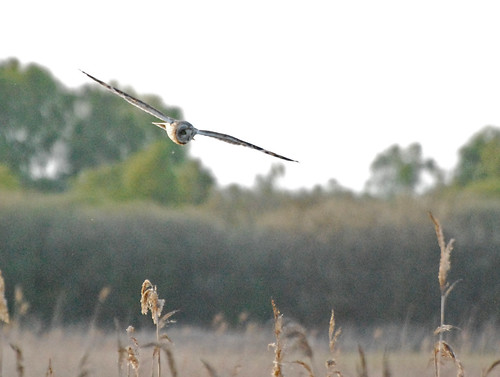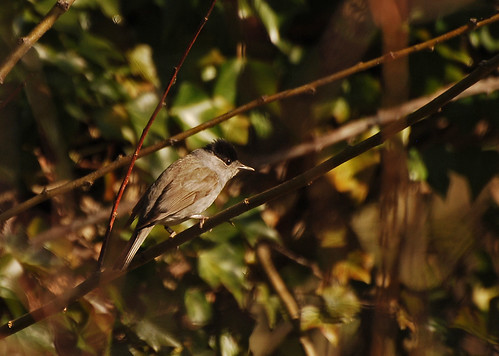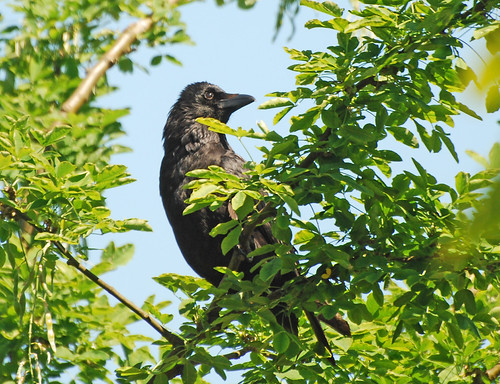The font of all wisdom in my area for what birdlife is around is the Cambridge Bird Club ‘What’s About‘ blog. A short while ago there was a report of a sighting of a bittern at one of my regular nature walks, Milton Country Park. This was an exciting development because I’ve never seen a bittern before, so on the following Saturday morning I set off before dawn to be in situ at sun up to try and see it. The bittern (Botaurus stellaris, Dansk: Rørdrum) is a small brown heron which lives in reedbeds and is so perfectly camouflaged it is almost impossible to find until it breaks cover. It’s famous for the ‘booming‘ call of the male which can be heard up to 1km away, so I set off hopeful of not only seeing one but maybe hearing it boom too. Ever the optimist!
The conservation status of the bittern in the UK is red, meaning it is scarce and under threat. Alas, the chap I was hoping to catch a glimpse of was very scarce indeed, to the point of being completely absent. Oh well, next time maybe. But every cloud and all that, even though the bittern had absconded there was other birdlife in abundance.
 And not only birds, snowdrops were blossoming on the forest floor
And not only birds, snowdrops were blossoming on the forest floor
The Country Park is made up of old gravel or quarry pits surrounded by a mixture of grassy scrub and mature woodland. Up in the treetops great spottted woodpeckers were hammering holes…
 Great spotted woodpecker (Dendrocops major, Dansk: stor flagspætte)
Great spotted woodpecker (Dendrocops major, Dansk: stor flagspætte)
I think this one is a female – the male has a red patch on the back of his neck which I think was absent on this one. The woodpeckers drumming sound results from the frequency of drilling rather than the power. They have energy absorbing tissues in the head to prevent brain damage and they strike at a frequency of 10-40 times a second which makes the tree trunk resonate, and that’s how they create their unique sound. Treecreepers were spiralling up these trees too, but they were just too quick to get a photograph.
But on the lakes there were hundreds and hundreds of water birds of all types:
 Courting great crested grebes (Podiceps cristatus, Dansk: toppet lappedykker)
Courting great crested grebes (Podiceps cristatus, Dansk: toppet lappedykker)
The full mating ritual of the great crested grebe is a wonderful sight. I’ve only ever seen it a couple of times and it involves swimming away from each other to a distance of 20-30m or so, then turning and swimming rapidly towards each other and when they meet they rise up in a vigorous display of necking before settling back into the water facing each other and creating a heart shape with their heads and necks. This is repeated mofre tha once and is utterly absorbing and delightful to watch. I was fervently hoping that my pair here were going to perform but they were content to simply preen, commune and doze. Still lovely though.
 Another male great crested grebe with a pair of male pochard in hot pursuit (Aythya ferina, Dansk: taffeland)
Another male great crested grebe with a pair of male pochard in hot pursuit (Aythya ferina, Dansk: taffeland)
 Two male tufted ducks (Aythya fuligula, Dansk: troldand) eyeing a lady with bad intent. Love, or something, was in the air!
Two male tufted ducks (Aythya fuligula, Dansk: troldand) eyeing a lady with bad intent. Love, or something, was in the air!
Both pochard and tufted duck are divers and the rapid spread of the tufted duck in the UK in the 19th century is though to be the result of colonisation of UK waterways by the zebra mussel which originates in southern Russia.
 A male gadwall (Anas strepera, Dansk: knarand)
A male gadwall (Anas strepera, Dansk: knarand)
On a grey murky day the gadwall looks like a dull grey/brown duck but when the sun shines on them they are quite handsome birds, easily recognised on the water by the black rump, general brown plumage and the grey/black beak.
Coot and moorhen (Fulica atra, Dansk: blishøne and Gallinula chloropus, Dansk: grønbenet rørhøne, respectively) are both members of the family Rallidae along with water rail (which I saw on a previous recent visit to the Country Park, but not this one, even though I spent 10-15 minutes quietly looking where I saw one before) and crakes, which aren’t to be found in these parts.
 The coot…
The coot…
 …and the moorhen
…and the moorhen
The male coots were in the mood for love and fighting out on the water on all the lakes, and were too numerous to count, and the occasional, more secretive and less aggressive, moorhen ventured into view from the reeds at the lake edges.

The brown heads are male wigeon, the black and white ones are male tufted duck, the two brown ones in the foreground are a pair of gadwall and out of focus at the back is another gadwall and a coot
As the sun came up the birds on the water semed to spring into life and large groups of various species busy feeding. All the pictures in this post were taken in a couple of hours or so from dawn until 10-11am and within a 300m radius. But as the sun arose and the light changed the colour of the water changed dramatically and gave some wonderfully varied backgrounds.
I stopped at a gap in the undergrowth to photograph the various species above and as I stood snapping the robin hopped into view between me and the water pecking at the seeds on the ground left by a benevolent walker for the ducks:

I think the most colourful, and therefore my favourite duck of that morning was the wigeon:
 A pair of wigeon (Anas penelope, Dansk: pibeand), the male behind, the lady in front
A pair of wigeon (Anas penelope, Dansk: pibeand), the male behind, the lady in front
 The male on his own – resplendent in his psychedelic finery
The male on his own – resplendent in his psychedelic finery
The wigeon is a resident breeder in the UK and it’s conservation status is amber, which surprised me because I see plenty of them on the lakes around Cambridgeshire. They are vegetarians feeding on leaves and shoots and rhizomes, and in my view they are one of our prettiest ducks.
So no bittern on this trip but lots of other wildlife on the water and in the trees!
 The ospreys were magnificent but this humble pair of grebes stole the show!
The ospreys were magnificent but this humble pair of grebes stole the show!
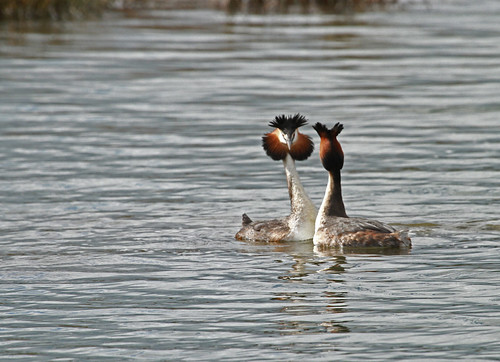
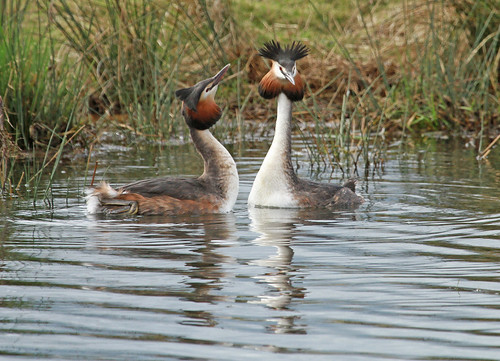

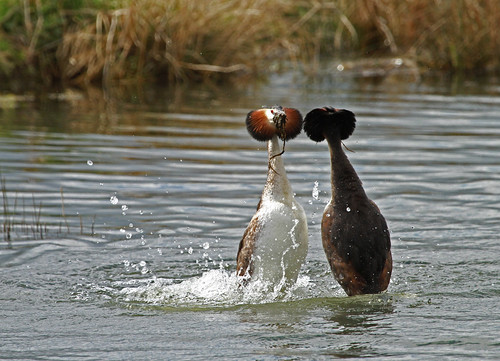
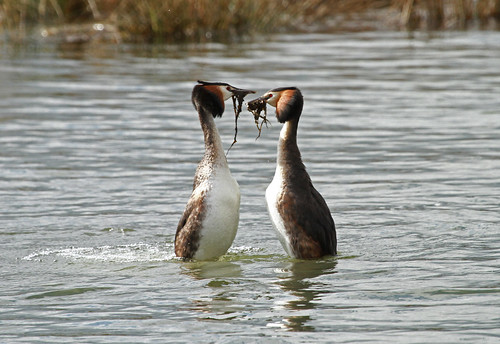
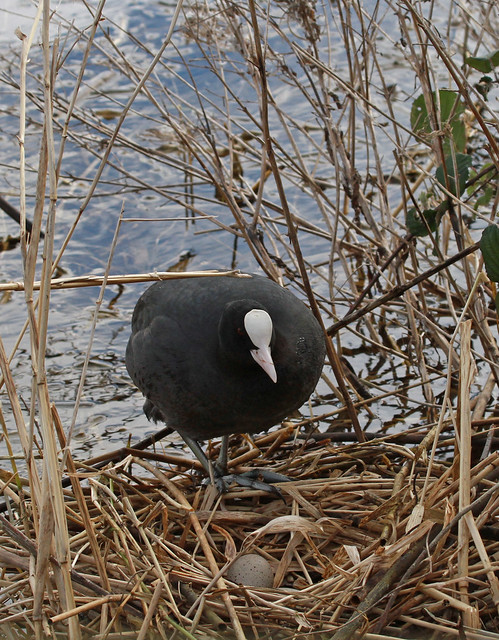

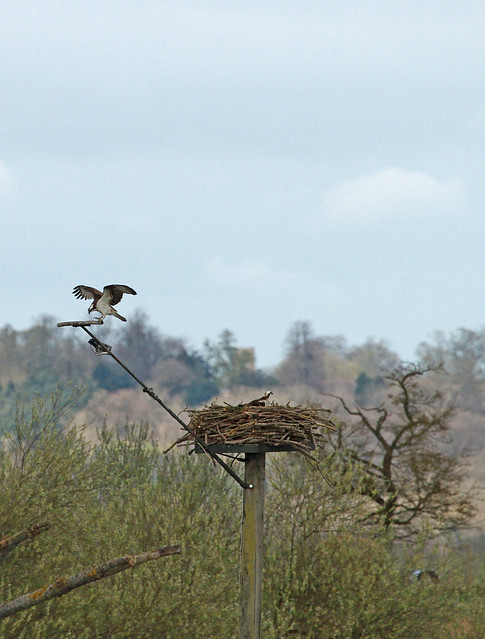


















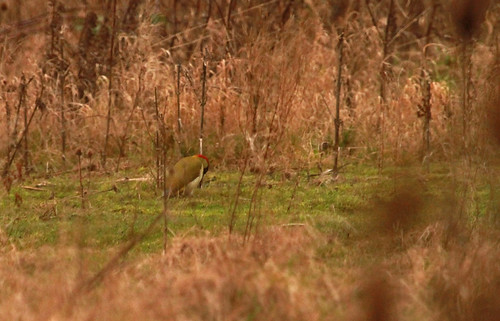 Green woodpecker (Picus viridis, Dansk: grønspætte) mining ants next to the car park at Fen Drayton lakes and fastidiously refusing to look up
Green woodpecker (Picus viridis, Dansk: grønspætte) mining ants next to the car park at Fen Drayton lakes and fastidiously refusing to look up Great spotted woodpecker (Dendrocops major, Dansk: stor flagspætte) patrolling the treetops
Great spotted woodpecker (Dendrocops major, Dansk: stor flagspætte) patrolling the treetops A small fraction of a much bigger flock of lapwing, I make it 84 in this group
A small fraction of a much bigger flock of lapwing, I make it 84 in this group A blue tit deftly plucking seeds from a swaying reed seedhead
A blue tit deftly plucking seeds from a swaying reed seedhead Goldeneye drake – elegance personified
Goldeneye drake – elegance personified

